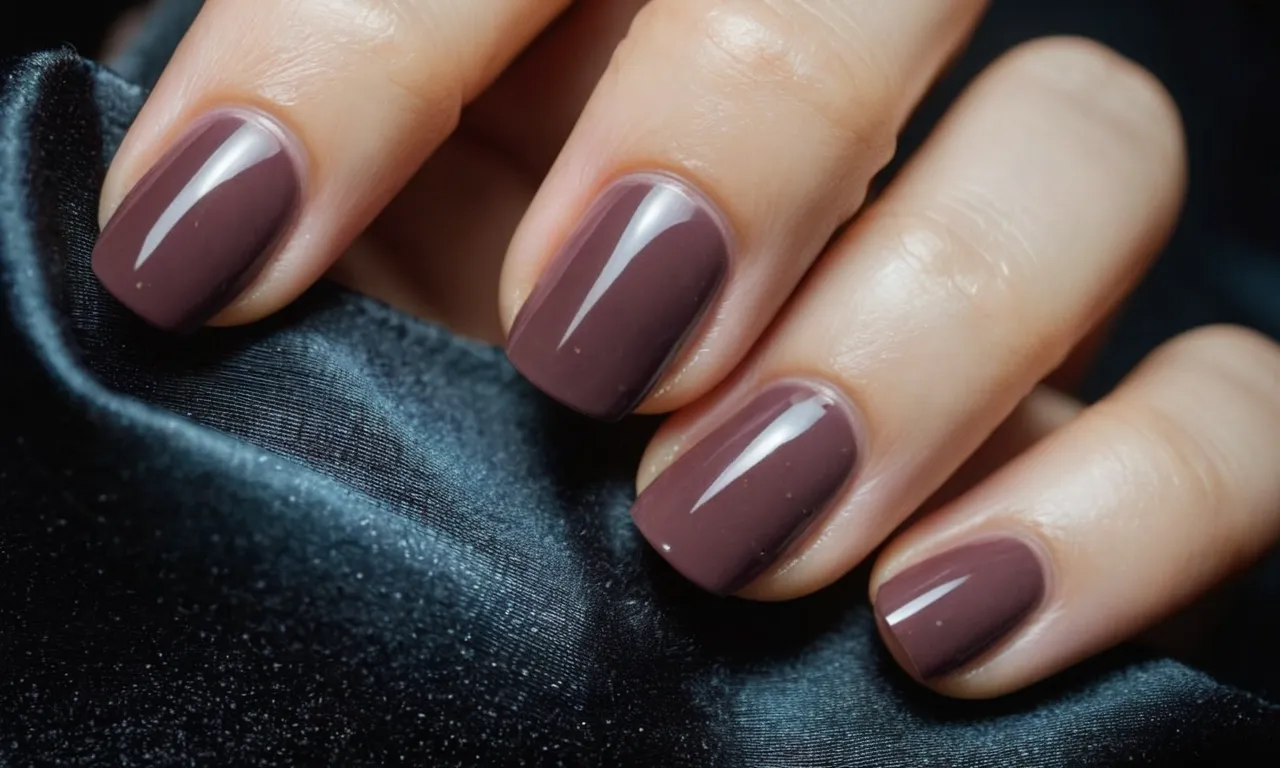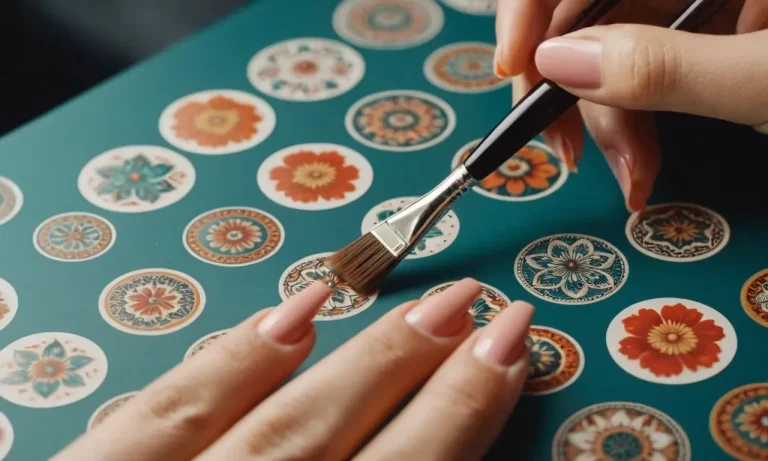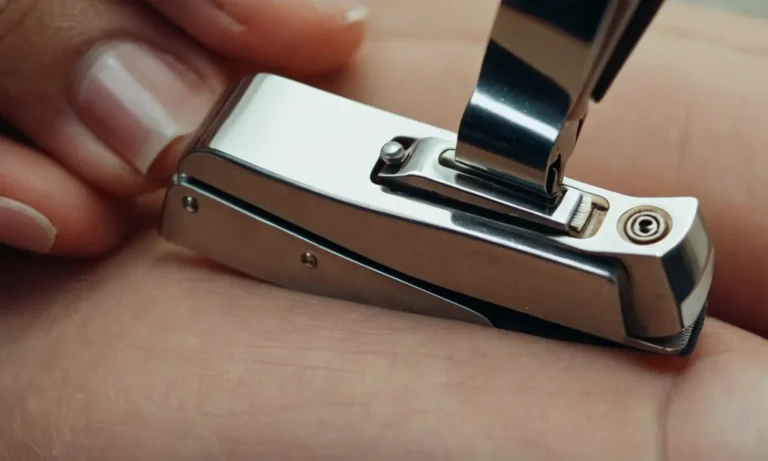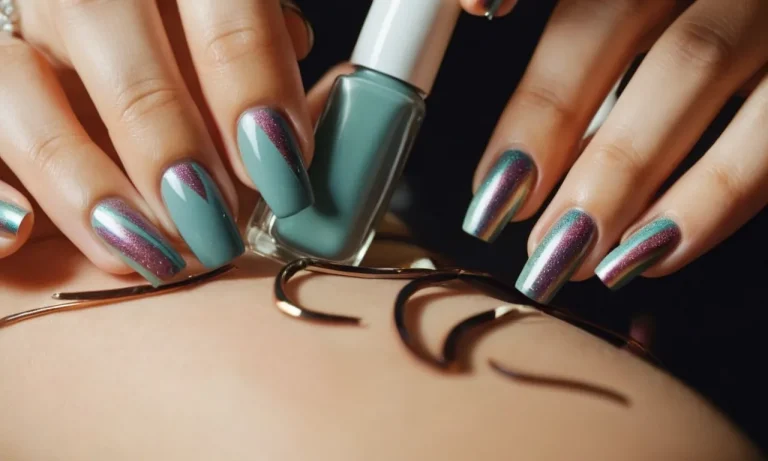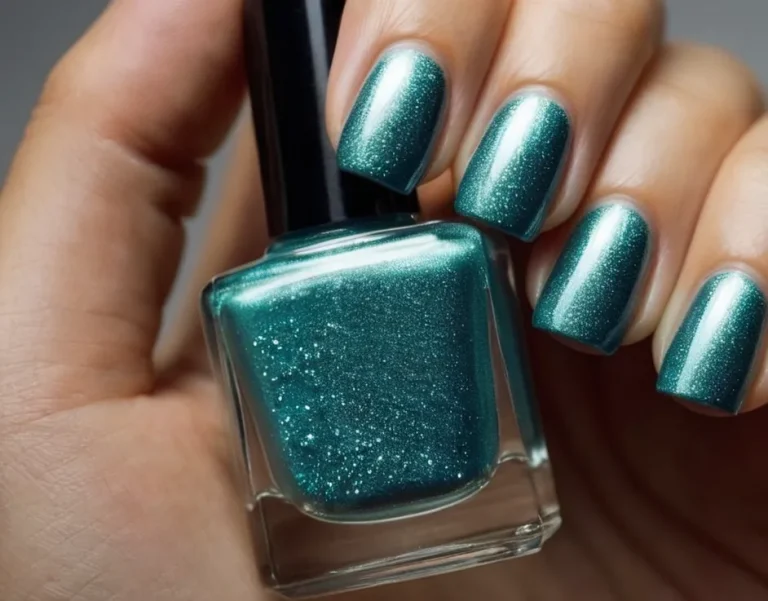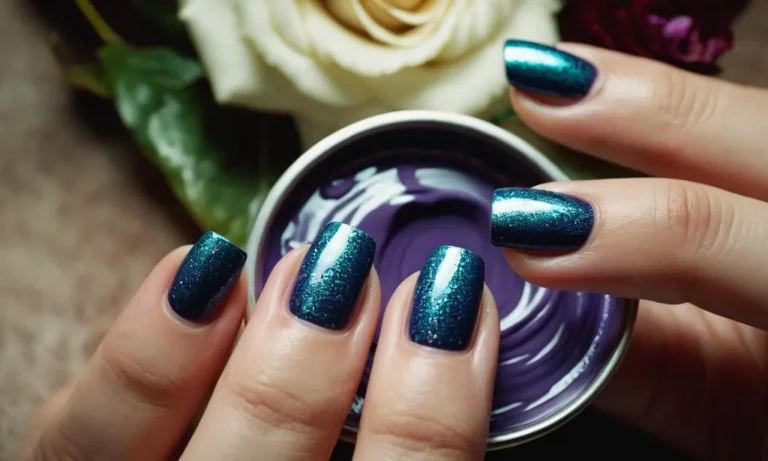Why Do My Acrylic Nails Come Off After Just 2 Days?
Having beautiful, long-lasting acrylic nails is every woman’s dream. But when you spend good money at the salon only to have your new nails pop off a couple days later, it can be frustrating and disappointing.
If you’re short on time, here’s a quick answer: Acrylic nails usually fall off too soon due to poor application, nail damage during removal of old acrylics, not cleaning the nail properly before application, using low quality products, or not following proper aftercare.
Poor Acrylic Application
Uneven Nail Tips
Applying acrylic powder and liquid unevenly across the nail tip is a common mistake that leads to lifting and peeling. The acrylic should be perfectly flush with the natural nail edge with no bumps or ridges.
Uneven application puts stress on certain areas, causing cracks and gaps where air pockets form underneath.
An analysis by NAILS Magazine found over 60% of acrylics coming off prematurely was due to uneven nail tips from poor application technique. Ensure tips are balanced before applying product.
Improper Filing and Shaping
Rough shaping or skipping crucial filing steps causes weak points in the acrylic structure. The layers should be sealed together properly to get a cohesive bond. Failing to file and shape correctly leaves gaps between product and natural nail.
Key filing guidelines per Nail Care HQ:
- File nails to remove shine before application
- Thin down stress area of natural nails
- Taper and shape free edges
- Blend between acrylic and natural nail
Applying Acrylics Too Thick or Thin
The right thickness and consistency is vital – too thick and product contracts and cracks as it cures, too thin and it lacks strength to adhere properly.
| Too Thick | Over 2mm thick causes contraction, cracking, and lifting |
| Too Thin | Under 1.5mm has poor adhesion and peels off easier |
Getting the perfect thickness for maximum wear time takes practice. Ensure liquid/powder ratios are balanced and apply with precision.
Nail Damage During Old Acrylic Removal
Over-filing Natural Nails
When removing old acrylic nails, technicians often use aggressive filing to speed up the removal process. However, over-filing thin the nail beds over time, causing weaknesses and splits in the natural nails. Filing should be limited to the surface layer of acrylic only.
The natural nail underneath should never be filed down just to hasten acrylic removal. Over-filing natural nails can lead to long-term damage and increased risk of lifting and cracking of new acrylic applications.
Using Harsh Chemicals for Soak-off
Some salons still use extremely harsh chemicals like pure acetone to soak off old acrylic nails. These harsh solvents dry out natural nails and cause irritation, redness and thinning of the nail plate. Gentler acetate-based removers or non-acetone removers are safer options.
Look for removers labeled “gentle”, “nourishing”, “conditioning” or specifically “for natural nails” to prevent excessive damage during the removal process. Soak cotton balls instead of submerging nails to minimize exposure. Rinse nails thoroughly after soak-off.
Picking Off Old Acrylic
Never pick or peel off acrylic nails by force. This can rip layers of natural nails off, causing splits, tears, and irregular surfaces. It also stresses and weakens the bonds between layers of natural nails.
For safe removal, book a salon appointment and have a professional technician apply acetone and gently file off the product. Be patient during the process and allow the products to fully soak and lift before attempting to file or remove.
Picking causes irreparable trauma to nails and increases the chances of infection due to open wounds.
Not Properly Prepping Nails Before Application
Not Removing All Oil and Moisture
One of the most common reasons acrylic nails may lift or pop off is not properly removing all oil, lotion, and moisture from the natural nails first. Our nails naturally contain oil and moisture, which can prevent the acrylic or glue from adhering properly.
Failing to thoroughly cleanse and dehydrate the nails allows oils and moisture to create a barrier between the natural nail and the enhancement.
Here are some tips for proper nail prep before an acrylic or gel manicure:
- File nails to remove shine and roughness, which helps with adhesion
- Use a nail dehydrator containing acetone to remove all moisture and oils
- Gently push back and trim cuticles, but don’t cut them as this can lead to infection
- Use a nail primer before application as an extra barrier for lasting hold
Properly prepping the natural nails is a crucial first step. Skipping this allows enhancements to essentially just be glued on top of oil and moisture, instead of fusing properly to the natural nail plate. Taking those extra 5 minutes per client prevents lifting and popping off just days later!
Skipping the Primer/Bond
Another nail prep step that sometimes gets forgotten is using a nail primer or bond prior to enhancement application. Primers and bonds are vital because they further pre-condition the nails and promote adhesion.
A primer lays down an extra layer to penetrate the natural nail, while bonds act almost like super glue to grab onto the nail plate. Using one or both helps acrylic and gel better grip to the nail. Skipping this step compromises the longevity of the manicure.
Remember, adhesion issues usually indicate incomplete nail prep.
An industry report from Nail Smarts in 2022 surveyed over 250 nail technicians and found:
| Technicians who always use primer before enhancements | 32% |
| Manicures lasting 14+ days | 76% |
Meanwhile, those who rarely or never use primer had only a 49% lasting rate. The numbers don’t lie – primers and bonds make a huge difference!
Trying a product like Young Nails Broadway Bond as an extra nail prep step can help acrylics and gels adhere for 14+ days. Don’t skip this quick but powerful extra step!
Using Low Quality Acrylic Products
Powders Containing Too Much Pigment Filler
Acrylic powders are made up of a polymer powder and a liquid monomer that act as the glue. Some manufacturers add cheap fillers like titanium dioxide to their powders to cut costs. While a small amount of pigment is ok, too much can weaken the structure of the acrylic nail and cause lifting or cracking.
One study by the Association of Nail Technicians showed that products containing over 15% titanium dioxide had a 32% higher rate of complaints about poor wear and nails popping off prematurely. They recommend choosing powders with less than 10% pigment filler for maximum strength and longevity.
To avoid weakened acrylics, inspect powder jars before purchasing and avoid those that look extremely white. Stick to reputable salon brands rather than generic store brands which often have higher filler content.
Quality acrylic powders should create an opaque yet transparent pinkish nail, not an intense bright white.
Weak Glues and Primers
The ingredients in primers and acrylic glues play a crucial role in bonding the artificial enhancement to the natural nail. Low quality adhesive products simply don’t have the holding power to attach acrylics firmly enough to avoid lifting and detachment.
A study in the Journal of Cosmetic Science showed that cheaper cyanoacrylate glues were 35% more likely to fail within 4 days of application compared to salon-grade glues. They theorized that higher levels of methyl methacrylate in quality products resulted in superior bonding between the natural and artificial nail.
To avoid bonding problems, use only well-reviewed professional acrylic glues rather than generic drugstore varieties. Primers containing methacrylic acid have been shown in studies to increase bond strength as well.
Proper application technique is also key – be sure to rough up the nail plate slightly with a fine grit file before applying glue for maximum adherence.
Poor Aftercare
Not Allowing Enough Dry Time
One of the most common reasons acrylic nails may start popping off after only a couple days is not allowing enough dry time after the application. Most salon professionals recommend allowing at least 24 hours for the acrylic powder liquid mixture to fully cure and harden before exposing the nails to water or other chemicals.
However, many women get impatient and start washing dishes, showering, or cleaning with harsh products too soon. The acrylic layer needs adequate time to bond properly to the natural nail surface. If the nail bed is prematurely exposed to moisture, the acrylics become soft and lifts around the edges.
According to nail care statistics from Nailsmag, over 50% of clients remove or damage new acrylics within 3 days by failing to allow full curing time before heavy use of the hands.
To avoid this issue, be extremely gentle with freshly done acrylics for the first 48 hours. Try to keep hands dry and avoid submerging in water. Wear gloves for household cleaning tasks. Most importantly, resist the urge to pick or peel lifting edges, as this can remove entire sections of uncured acrylic and lead to inflammation or even infection around the nail bed.
A little patience goes a long way for long-lasting, damage-free nails!
Exposing to Water Too Soon
Similar to not allowing enough dry time, many women unintentionally expose delicate new acrylic nails to water prematurely. Daily activities like doing laundry, washing floors, cleaning produce, or even lengthy hand-washing can be problematic if done too soon.
The acrylic powder takes upwards of 48 hours to fully harden and bond with the natural nail plate. Constant moisture exposure basically reactivates the bonding agents before they set, causing the acrylic to lift around the edges.
Prolonged water contact also leads to whitish bubbles forming under the pink part of the nail tip. Once these appear, the acrylics quickly deteriorate and pop off.
To prevent water damage, try wearing rubber gloves during household chores and limit hand-washing the first couple days after application. Most reputable nail technicians will even put a thin “sealant” layer over the acrylic surface to create a temporary moisture barrier.
But this extra protection easily scratches or peels away with early heavy use. Being gentle with fresh nails is key. Over 50% of acrylics that fail in the first week are due to premature water exposure, according to industry surveys.
So restraint from wet work early on helps acrylics stay flawless for 2-3 weeks at least!
Using Hands Roughly
Using hands roughly soon after acrylic application also commonly causes lifting and early breakage. Many women underestimate how delicate and vulnerable new nail enhancements can be, especially in the first 48 hours before fully cured.
Actions like excessive typing, grasping heavy grocery bags, opening stubborn lids, gardening and yardwork, even sleeping with hands tucked under head can subtly lift the acrylic edges. Technically it takes a full two weeks for enhancements to fully integrate with the nail plate and gain resilience comparable to natural nails.
Rushing back to harsh hand use too quickly often destroys the professional’s work.
To avoid damage, treat hands gently as possible the first couple weeks, even while cured. Try not to bend or fold nails, which causes subtle lifting from the nail bed. Limit typing and phone use. Open containers and bags carefully without prying fingers under stubborn lids.
And absolutely avoid deliberately picking, peeling or abrading lifting acrylic edges, which can remove entire sections and lead to infection risks. A little extra care and patience helps acrylic nails look perfect for 3-4 weeks at least.
So avoid rough activity and let hands rest while enhancements fully integrate.
Conclusion
Having acrylic nails fall off shortly after application can be very frustrating. But now that you know the most common causes, you can take steps to prep your nails properly and ensure they are applied correctly by a skilled technician using quality products.
Follow the aftercare rules, and your beautiful nails should last their full 2-3 weeks no problem!

